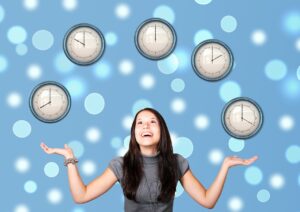Businesses are anxious to reopen. Consumers are likewise ready to return to normal (or as close to normal as possible). But, any business reopening must do so responsibly. After all, not providing a safe environment will only backfire and cost them in a number of ways. This means taking a smart, incremental approach and one that can help to get things back on track.
What to Know about Post-Pandemic Reopening
The first thing any business owner needs to know is exactly what their state and local governments will allow and disallow. If you run afoul of the rules, even those which seem unfair, you’re only setting yourself for a lot of grief and probably a huge amount of regret.
For these small businesses to come back after the pandemic abates, and once again serve as an engine of American innovation, they need aid. The Coronavirus Aid, Relief and Economic Security (or CARES) Act set aside $349 billion in loans and assistance for small businesses and there may be more to come. But business owners also need to make the best possible decisions to get them through this difficult period. —Harvard Business Review
Another thing to know about reopening is how your patrons or clients will respond. Just because there’s a green light to open from the state and local government doesn’t mean the public will respond positively. In other words, you need to understand public sentiment.
3 Big Reopening Mistakes Businesses should Avoid
Now, as for reopening, there are many things you should do to get back to full operation. But, there are also things you need to avoid doing, as well. Here are three of the biggest reopening mistakes businesses should avoid:
- Expecting employees to immediately return to work. Just because you’re ready (and willing), doesn’t mean your team members will feel or act the same way. So, speak with each one individually and listen to their concerns. Plus, encourage them to be open about their circumstances and be supportive, if necessary. Some business owners are expressing challenges with employees who are receiving unemployment which exceeds what they earned as an employee so they are reluctant to return. Business owners need to be prepared by discussing the need to help the business serve its customers. Also, if the employee does not return, there is no guarantee the employer will not have replaced the employee’s position when the previous employee’s unemployment checks end
- Not having procedures in place to maintain social distancing. At this time, it’s expected there will still be a need for social distancing into the foreseeable future. So, be sure to formulate a realistic plan to maintain those social distances in order to provide a safe and healthy environment.
- Trying to rush through the reopening process to get things back to normal ASAP. Whatever you do, don’t fall into the trap of trying to reopen to soon or at too fast a pace. While it’s completely understandable you’re ready to resume operations, if you rush, you’re likely to make rash decisions that will cost you in more ways than one.
- Remember to offer what the Customer wants. Instead of trying to reinvent your service offerings, ask the Customer what they want and most enjoyed or valued about your services and deliver what the Customer wants.
What other mistakes would you say businesses that reopen are likely to experience? Please share your thoughts by commenting!
Interested in learning more about business? Then just visit Waters Business Consulting Group.




